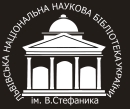DOI: https://doi.org/10.37222/2786-7552-2022-1-11
Emiliya Ohar
Doctor of Sciences (Social Communications), Professor Ukrainian Academy pf Printing in Lviv (Lviv, Ukraina)
UKRAINIAN PRESS FOR CHILDREN OF THE BEGINNING OF THE 21st CENTURY: FEATURES OF TRANSITION PERIOD
Abstract: Thе article is devoted to main trends of the developing Ukrainian periodics for children and adolescent in 2000–2011.
The research of the features of the repertoire of the Ukrainian children’s magazines in 2000–2010 from the perspective of the history of the modern Ukrainian press makes it possible to recreate the conventional «portrait» of a children’s magazine of the transition period and to describe the ‘communicative effectiveness’ or ‘functionality’ of a magazine for children and youth of the transition period in general.
The aim of the article is to analyze the quantitative and qualitative characteristics of the outlined group of magazines that appeared during the period of significant commercialization of the media market and the transformation of the publishing sphere – from paper to digital, assesses the functional potential of magazines for children at the time in terms of their ability to respond to the needs of a modern reader – a growing up child in the age of digital technologies.
The main consequences of the commercialization of Ukrainian publishing sphere in general and publishing of magazines for children in particular are described, such as: the catering for the general reader in order to increase circulation and as a consequence – the dominance of multifunctional polythematic magazines; the lead of entertaining texts over literary and informative, digitization and «inetrnetazition» of traditional print magazines, the emergence of convergent publications, in which content was placed on different platforms; replacing creativity with standard commercialized approaches; attraction in publishing approaches to mass culture; dominance in the layout and design of publications of the aesthetics of animation with screen iconography or its imitation; publication of bilingual – Russian and Ukrainian – versions of one magazine, rapid spread of licensed Russian-language gloss magazines, etc.
The special attention is paid to the problem of the massification of periodicals for children – magazines that took on a canon-forming function and nurtured new generations of readers with an undemanding, uncritical aesthetic taste.
Keywords: press for children, repertoire of children’s magazine, communicative effectiveness, transition period, commercialization of publishing sphere.
References:
- Vernyhora, N. (2005). Rol periodychnykh vydan dlia ditei u formuvanni movnykh navychok [The role of children’s periodicals in shaping language skills], Styl i tekst, Kyiv: In-t zhurnalistyky KNU im. Tarasa Shevchenka, (6), 164–167 (in Ukr.).
- Davydchenko, T. (2010). Dytiachi periodychni vydannia v Ukraini: kontentanalitychne doslidzhennia zmistu [Children’s periodicals in Ukraine: content analysis], Naukovi zapysky Instytutu zhurnalistyky, Kyiv: Int zhurnalistyky KNU im. Tarasa Shevchenka, (38), 176–181 (in Ukr.).
- Davydchenko, T. (2008). Suchasna presa dlia ditei v Ukraini: perevahy ta nedoliky [Modern children’s press in Ukraine: advantages and disadvantages.], Zbirnyk prats Naukovo-doslidnoho tsentru periodyky, (1(16), 123–134 (in Ukr.).
- Krul, L. (2011). Suchasna ukrainska periodyka dlia ditei: stan, tendentsii, perspektyvy [Modern urkainian children’s press: condition, trends, prospects], Literatura. Dity. Chas, (1), 71–79 (in Ukr.).
- Krut, I. (2011). Zhurnal dlia ditei: dyskursyvni kharakterystyky [Children’s magazine: discursive characteristics], Visnyk Lvivskogo universytetu. Seriya «Zhurnalistyka», (34), 136–141 (in Ukr.).
- Ohar, E. (2012). Dytiacha knyha v ukrainskomu sotsiumi (dosvid perekhidnoi doby) [A children’s book in Ukrainian society (experience of the transitional period)], Lviv: Svit, 320 (in Ukr.).
- Ohar, E. (2004). Osoblyvosti populiaryzatsii znan u suchasnii dytiachii periodytsi [Peculiarities of the knowledge popularization in modern children’s periodicals], Zbirnyk prats Naukovo-doslidnoho tsentru periodyky, (12), 390–405 (in Ukr.).
- Ohar, E. (2021). Funktsionalno-komunikatyvnyi potentsial suchasnykh dytiachykh chasopysiv [Functional and communicative potential of modern children’s magazines], Zbirnyk prats Naukovo-doslidnoho instytutu presoznavstva, (1(20), 253–265 (in Ukr.).
- Orlyk, O. (2011). Rozvytok suchasnoi dytiachoi periodyky (2008–2011) [Development of modern children’s periodicals (2008˗2011)], Visnyk Knyzhkovoi palaty Ukrainy, (12), 26–30 (in Ukr.).
- Pobidash, I. (2015). Stan doslidzhennia dytiachoi periodyky v ukrainskii nautsi [The state of children’s periodicals study in Ukrainian science], Obrii drukarstva, (1(4), 132–137 (in Ukr.).
- Sait Knyzhkovoi palaty Ukrainy: statystyka druku. Retrieved from http://www.ukrbook.net (in Ukr.).
- Sokirian, A. (2006). Suchasnyi dytiachyi zhurnal: zahalna kharakterystyka [Modern children’s magazine: general characteristics], Drukarstvo, (1), 25–28 (in Ukr.).
- Soshynska, Ya., Boiarynova, O. (2009). Suchasnyi dytiachyi chasopys: mozhlyvosti stvorennia ta vyvedennia na rynok [Modern children’s magazine: possibilities of creation and introduction to the market]. Retrieved from http://www.nbuv.gov.ua/portal/soc_gum/vkp/2009_8/V_8/st_1.pdf (in Ukr.).
Article design requirements
Submissions
Editorial board
2022: Issue 1
2023: Issue 2
2023: Issue 3
2024: Issue 4
2024: Issue 5


